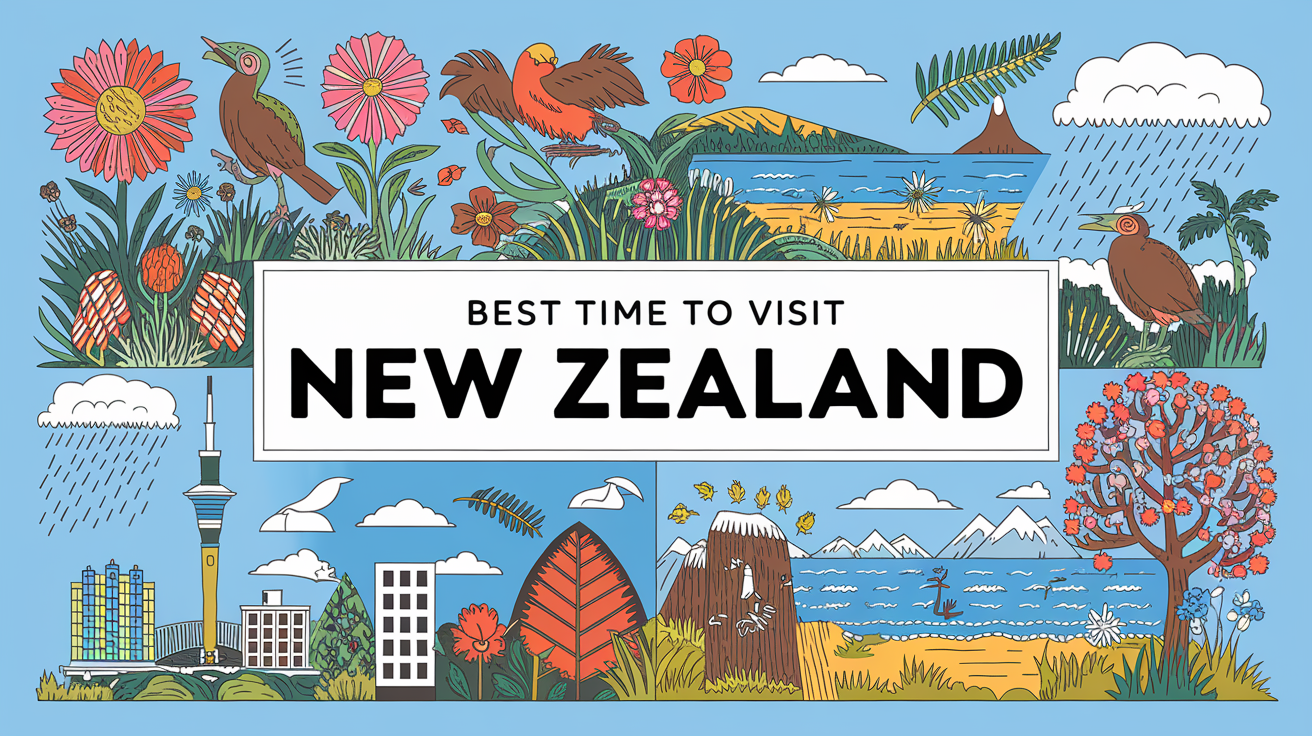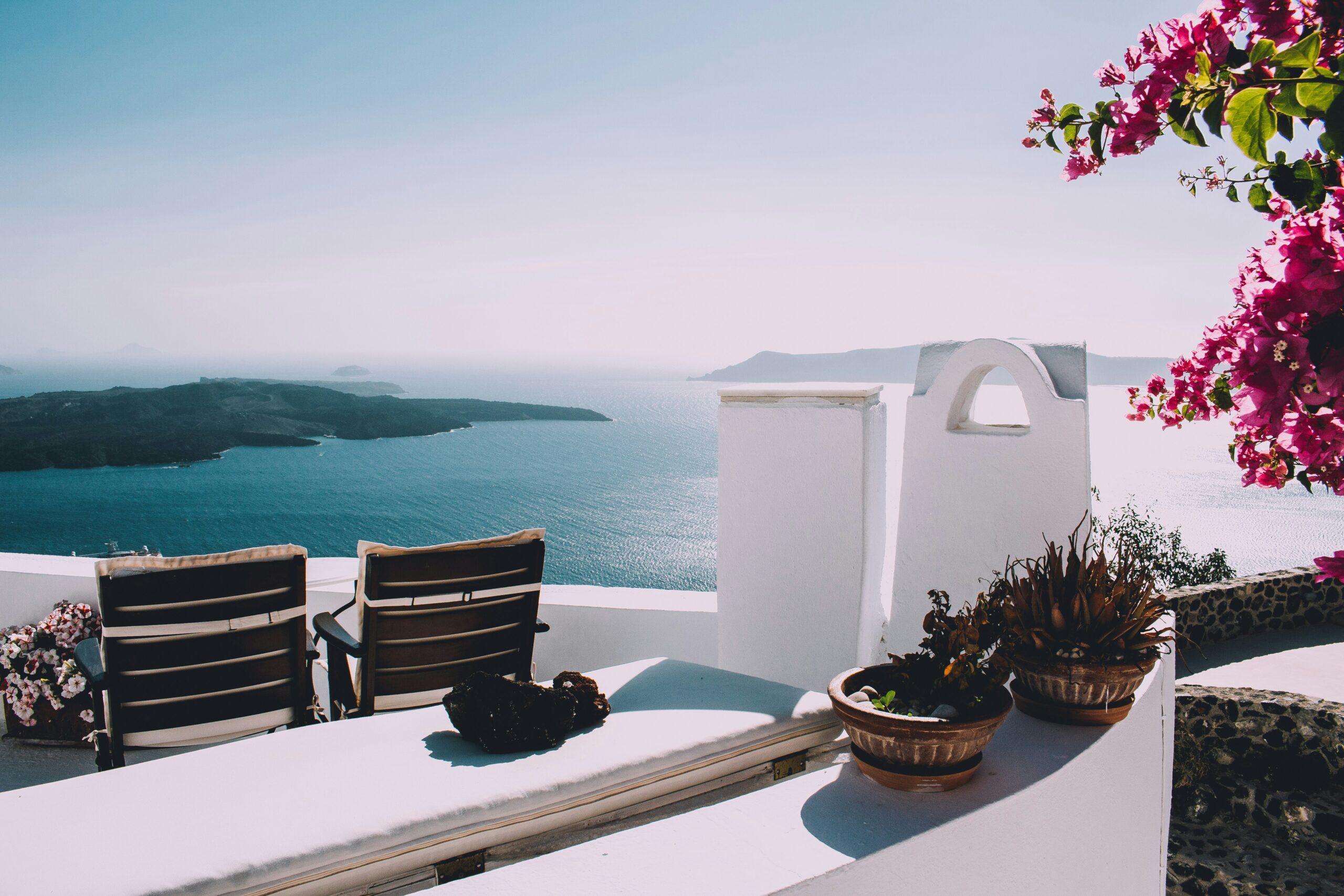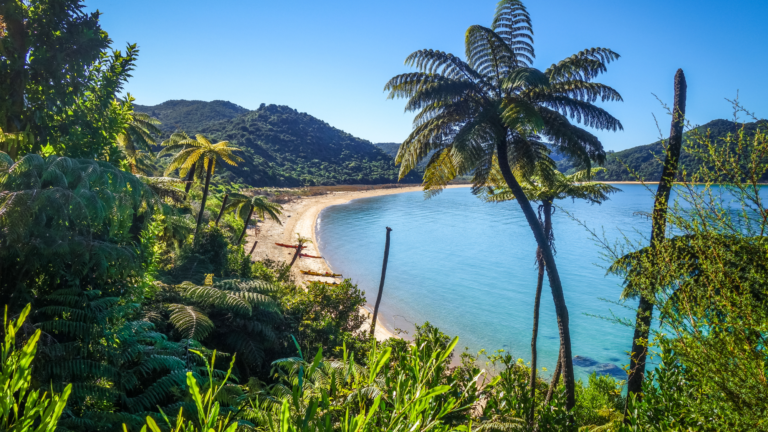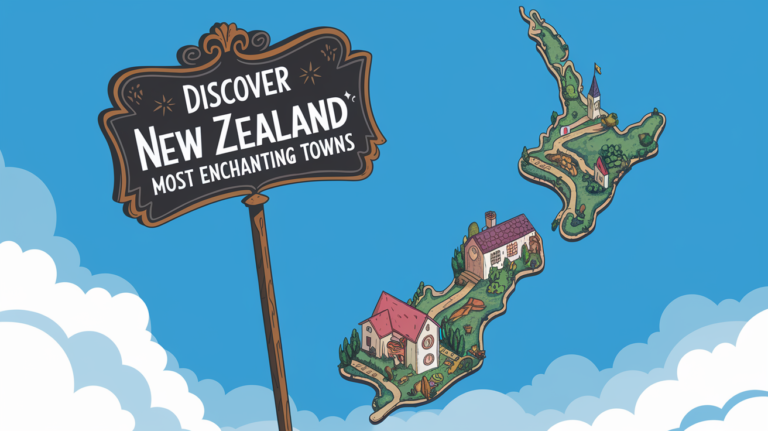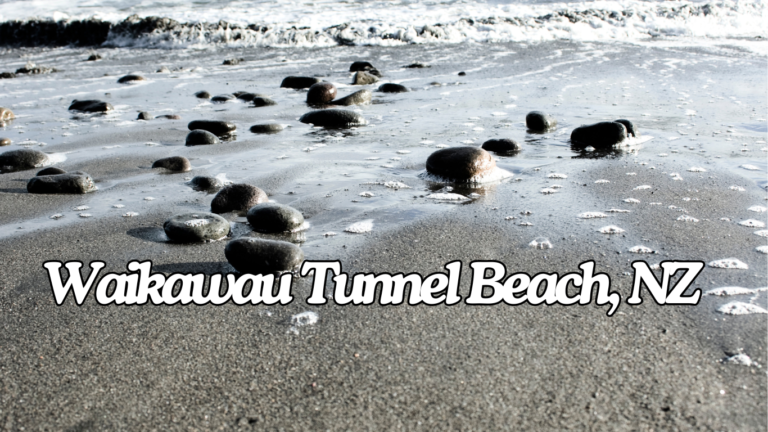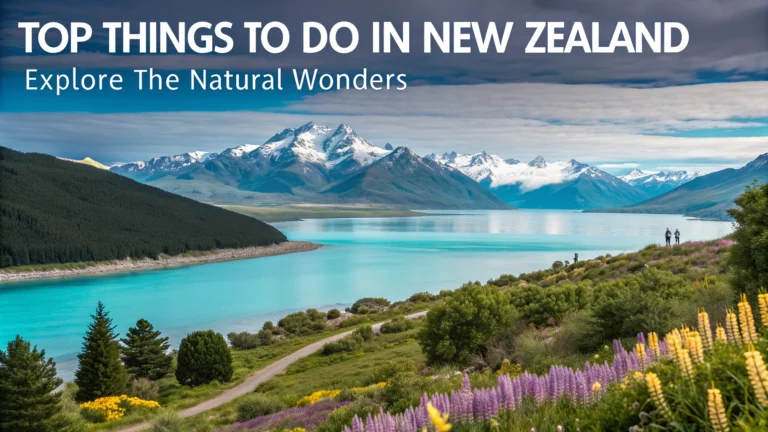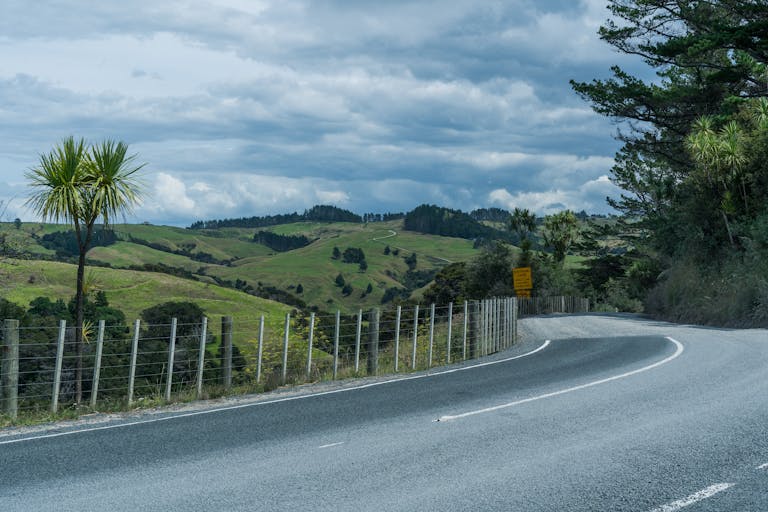Best Time to Visit New Zealand
You’ve decided to explore New Zealand, but you’re wondering when to go. It’s a valid question, as the timing of your visit can greatly impact your experience.
Whether you’re seeking sun-soaked beaches, snow-capped mountains, or vibrant autumn foliage, New Zealand has something to offer year-round. Each season brings its own unique charm and set of activities.
The best time for you will depend on your personal preferences and travel goals.
My favaourite time of the year in New Zealand is late summer. Feburary through to April. You can’t really beat a nice NZ summer and if you wait until after Christmas and the school holidays you will have a much quieter time on your travels yet the weather will still be great and sometimes even better than mid summer as the summers can be drawn out and the weather will often be calmer with less rain and wind.
So before you start packing your bags, there’s more you should consider about the Land of the Long White Cloud’s seasonal offerings. Take a looks through the guide and see what season will suit you best.
Key Takeaways
- Summer (December-February) offers warmest weather and peak tourist activities but with larger crowds and higher prices.
- Spring (September-November) provides mild temperatures, stunning blooms, and fewer tourists for a more relaxed experience.
- Autumn (March-May) features pleasant weather, beautiful foliage, and reduced travel costs with fewer crowds.
- Winter (June-August) is ideal for skiing and snow sports, with magical landscapes and lower accommodation prices.
- Year-round activities are available, but consider regional climate differences between North and South Islands when planning.
Seasonal Overview
Throughout the year, New Zealand offers visitors a diverse range of experiences across its four distinct seasons. You’ll find each season has its own unique charm and activities to enjoy.
Summer, from December to February, is the peak tourist season. The North Island basks in temperatures between 20-30°C (68-86°F), while the South Island enjoys a comfortable 20-25°C (68-77°F). It’s the perfect time for beach activities and outdoor adventures.
Winter arrives from June to August, bringing colder temperatures, especially to the South Island. Some areas can drop to -10°C (14°F), making it ideal for skiing and snow sports enthusiasts.
Spring, spanning September to November, offers mild temperatures of 16-19°C (61-66°F). You’ll witness stunning blooms and can partake in various outdoor activities without the summer crowds.
Autumn, from March to May, features cooler temperatures ranging from 17-21°C (62-70°F). You’ll be treated to beautiful foliage as the landscape transforms.
For hiking enthusiasts, plan your visit between October and April. This period avoids winter’s harsh conditions and provides favorable weather for exploring New Zealand’s breathtaking trails.
Spring and autumn are particularly appealing, offering fewer crowds and spectacular views.
Summer in New Zealand
Summer in New Zealand is a vibrant season that draws visitors from around the world. From December to February, you’ll experience the warmest temperatures of the year, ranging from 20-30°C (68-86°F).
It’s the perfect time for outdoor enthusiasts, with abundant opportunities for hiking, camping, and water sports. The sea temperatures, averaging around 20°C (68°F), are ideal for swimming and snorkeling.
You’ll find popular destinations like beaches and national parks at their busiest, especially in January during the peak tourist season. While this means more crowds, it also brings a lively atmosphere and numerous cultural events and festivals to enjoy.
Summer is also when New Zealand’s natural beauty is in full bloom. You’ll be treated to stunning displays of wildflowers, particularly lupins, enhancing the already breathtaking landscapes.
As you explore the country, you’ll encounter a unique blend of scenic wonders and local experiences.
Keep in mind that while summer offers the best weather for outdoor activities, it’s also the most crowded time. If you’re planning a visit during these months, book accommodations and activities in advance to guarantee availability.
Winter Wonderland
For winter enthusiasts, New Zealand transforms into a magical wonderland from June to August. The South Island’s popular ski areas, like Queenstown and Wanaka, see temperatures plummet to around -10°C (14°F), creating perfect conditions for snow sports.
As the ski season kicks off in June and reaches its peak in July and August, you’ll find excellent snow conditions for all your winter adventures.
Queenstown stands out as a winter sports mecca, offering a wide range of activities and a lively après-ski scene. You can hit the slopes for skiing and snowboarding or take it up a notch with exhilarating heli-skiing experiences.
But New Zealand’s winter isn’t just about snow sports. You’ll also have the chance to:
- Soak in natural hot springs, like Maruia Hot Springs, for a rejuvenating contrast to the chilly weather
- Witness the awe-inspiring Matariki celebrations, marking the Māori New Year in June
- Experience the unique beauty of snow-capped mountains against clear winter skies
- Embrace the cozy atmosphere of alpine lodges and fireside gatherings
With its blend of thrilling activities and cultural experiences, New Zealand’s winter offers an unforgettable adventure for those seeking a chilly escape.
Spring’s Natural Beauty
As New Zealand emerges from winter’s chill, spring bursts forth with a spectacular display of natural beauty. From September to November, you’ll experience mild temperatures ranging from 16-19°C (61-66°F), perfect for outdoor exploration and activities.
The landscape transforms into a vibrant canvas, with daffodils, tulips, and wildflowers painting the countryside in brilliant hues. Don’t miss the stunning lupins, which reach their peak during this season.
Spring offers a unique advantage for travelers: fewer crowds. You’ll enjoy a more peaceful experience at popular attractions and national parks, allowing you to immerse yourself in New Zealand’s natural wonders without the summer rush.
It’s an ideal time for hiking and outdoor adventures across both islands, as rainfall is lower compared to autumn.
The season also ushers in various local festivals, including Hobbit Day on September 22. If you’re a “Lord of the Rings” fan, you’ll delight in the themed events celebrating this beloved series.
With its pleasant weather, blooming landscapes, and cultural festivities, spring in New Zealand provides an unforgettable experience that combines natural beauty with comfortable conditions for exploration.
Autumn’s Golden Charm
Autumn in New Zealand offers a golden opportunity for travelers seeking a unique and enchanting experience. From March to May, you’ll find pleasant temperatures ranging from 17-21°C (62-70°F), perfect for exploring the country’s diverse landscapes. As the crowds thin out and travel costs drop, you’ll have the chance to immerse yourself in the local culture without the summer rush.
The South Island, in particular, puts on a spectacular show of fall foliage. You’ll be treated to a vibrant palette of reds, oranges, and yellows as deciduous trees transform the scenery into a photographer’s paradise. This season is ideal for outdoor enthusiasts, with less congested hiking trails in national parks like Abel Tasman.
Autumn’s charm extends beyond natural beauty, offering:
- Breathtaking vineyard tours during the grape harvest
- Mouthwatering food festivals celebrating local produce
- Serene moments of reflection amidst stunning fall landscapes
- Unforgettable encounters with New Zealand’s rich cultural heritage
You’ll find yourself captivated by the country’s agricultural bounty, savoring world-class wines and culinary delights.
With milder weather and fewer tourists, autumn provides the perfect backdrop for an authentic New Zealand experience that will leave you with lasting memories.
Outdoor Activities and Weather
New Zealand’s diverse landscapes and varied climate offer a playground for outdoor enthusiasts year-round. However, to make the most of your visit, it’s essential to plan your activities according to the seasons.
Summer (December to February) is the prime time for outdoor adventures, with temperatures ranging from 20-25°C and long, sunny days. You’ll enjoy ideal conditions for hiking, beach activities, and exploring the country’s natural wonders.
If you’re looking to avoid crowds, consider visiting in spring (September to November). With milder temperatures between 16-19°C and blooming flora, it’s perfect for hiking and countryside exploration.
Autumn (March to May) presents another excellent opportunity for outdoor activities. Temperatures of 17-21°C and stunning fall foliage create perfect conditions for cycling and vineyard visits.
Winter (June to August) is your best bet for snow sports, especially in the South Island. Ski fields open in June, with peak snowfall in July and August.
When planning hikes like the Tongariro Alpine Crossing, remember that seasonal conditions can greatly impact accessibility. This popular trail is best tackled in summer or autumn, as winter brings snow and avalanche risks.
Always check weather forecasts and trail conditions before setting out on any outdoor adventure in New Zealand.
Cultural Events and Festivals
The cultural calendar in New Zealand brims with exciting events and festivals throughout the year, offering visitors a chance to immerse themselves in the country’s rich heritage and vibrant arts scene.
You’ll find a diverse range of experiences, from wine tastings to film screenings and culinary delights.
In February, head to the Marlborough Wine Festival to sample the region’s renowned wines, paired with delicious food and live entertainment.
July brings the Auckland International Film Festival, where you can catch a wide selection of local and international films.
For seafood lovers, the Bluff Oyster Festival in May is a must-visit, featuring fresh oysters and local dishes.
Don’t miss these emotionally engaging events:
- The awe-inspiring Warbirds Over Wanaka Airshow during Easter weekend
- The spiritually significant Matariki celebrations in June
- The mouth-watering culinary experiences at the Bluff Oyster Festival
- The culturally enriching Auckland International Film Festival in July
These festivals showcase New Zealand’s unique culture, history, and natural beauty.
Budget-Friendly Travel Periods
Savvy travelers looking to stretch their dollars should set their sights on New Zealand’s off-peak seasons.
Winter months (June to August) and shoulder seasons (May and October) offer the most budget-friendly options, with lower accommodation prices and fewer tourists competing for space.
You’ll find the cheapest international flights from June to September, aligning perfectly with New Zealand’s quieter travel months.
If you’re a ski enthusiast on a budget, head to the South Island in July or August. You can enjoy affordable skiing opportunities, especially if you avoid major ski towns.
For those who prefer milder weather and breathtaking scenery, consider visiting during autumn (March to May). You’ll be treated to stunning foliage and reduced prices, all while avoiding the crowds that flock to the country during peak season.
Throughout these off-peak periods, you’ll benefit from lower rates on accommodations and attractions.
This allows you to explore New Zealand’s natural wonders without breaking the bank. By timing your visit strategically, you can experience the country’s diverse landscapes and unique culture while keeping your travel costs in check.
Regional Climate Differences
Understanding New Zealand’s regional climate differences can help you plan your visit more effectively, regardless of your budget or travel preferences.
The North Island generally offers milder temperatures year-round, making it ideal for outdoor activities in most seasons. You’ll find warm, dry summers and mild winters in coastal areas like Auckland and Bay of Islands.
In contrast, the South Island experiences colder winters, particularly in alpine regions, where temperatures can drop below -10°C (14°F).
The South Island’s climate varies dramatically between regions. The West Coast is known for high rainfall and lush rainforests, while eastern areas like Canterbury are drier and sunnier. This diversity allows you to experience a range of landscapes and activities throughout the year.
Consider these emotional aspects when planning your visit:
- The thrill of skiing in the South Island’s snowy alpine regions from June to August
- The serenity of exploring the North Island’s mild coastal areas year-round
- The awe-inspiring beauty of vibrant flora during spring and autumn
- The excitement of discovering unique regional experiences across both islands
Frequently Asked Questions
Are There Any Visa Restrictions for Visiting New Zealand During Peak Seasons?
During peak seasons, you’ll need an ETA if you’re from a visa waiver country. Otherwise, you must apply for a visitor visa in advance. Remember to check the official Immigration New Zealand website for the most up-to-date requirements.
How Far in Advance Should I Book Accommodations for Popular Tourist Destinations?
You’ll want to book 3-6 months ahead for peak summer, 2-4 months for shoulder seasons, and 1-3 months for winter. For popular cities during events, aim for 4-6 months. Don’t forget to check online for last-minute deals.
What Are the Best Months for Whale Watching in New Zealand?
You’ll find the best whale watching in New Zealand from June to August. These winter months coincide with humpback and southern right whale migrations. For peak activity, aim for mid-July to early August. Don’t miss Kaikoura’s diverse marine life!
Is It Possible to See the Southern Lights in New Zealand?
Yes, you can see the Southern Lights in New Zealand. You’ll have the best chance during winter months (May to August) in the South Island. Head to places like Dunedin, Invercargill, or Stewart Island for ideal viewing conditions.
How Does New Zealand’s School Holiday Schedule Affect Tourism and Travel?
You’ll find New Zealand busier during school holidays, especially in summer and winter. You’re likely to face higher prices and crowded attractions. It’s best to book accommodations early. Consider traveling outside these periods for a quieter experience.
Conclusion
You’ll find New Zealand enchanting year-round, but your ideal visit depends on your preferences. Summer’s perfect for beach days and outdoor adventures, while winter offers snowy escapes. Spring bursts with colorful blooms, and autumn dazzles with golden landscapes. Consider your budget, desired activities, and regional climate differences when planning. Don’t forget to check out local festivals and events. Whatever season you choose, you’re in for an unforgettable Kiwi experience.

